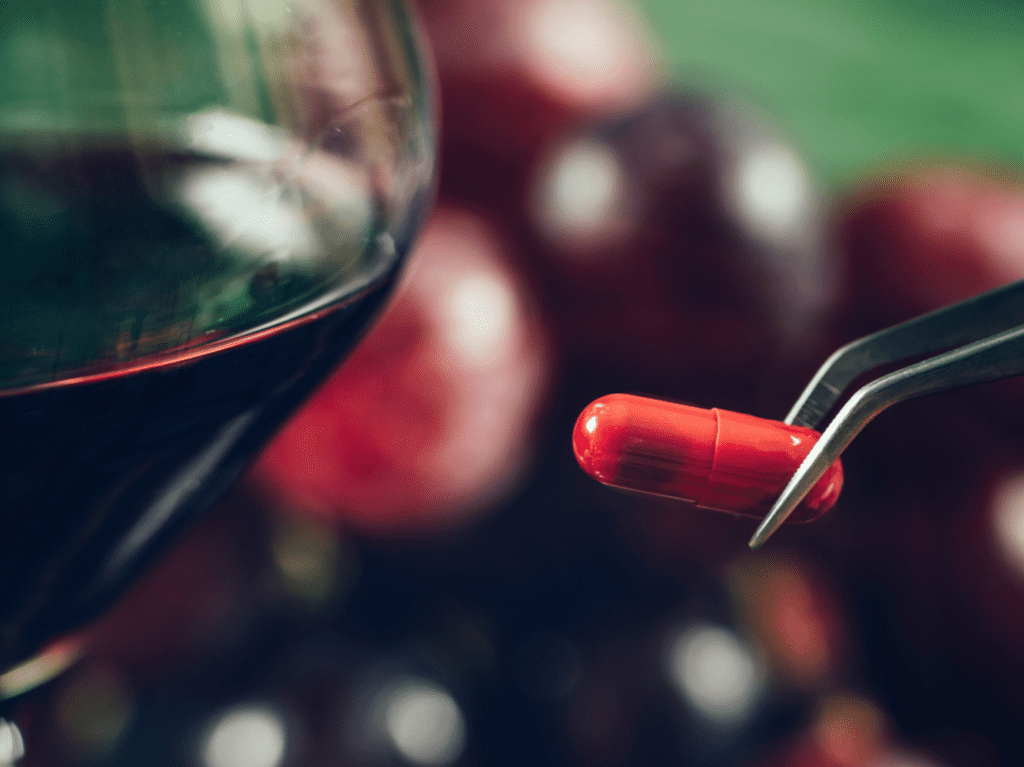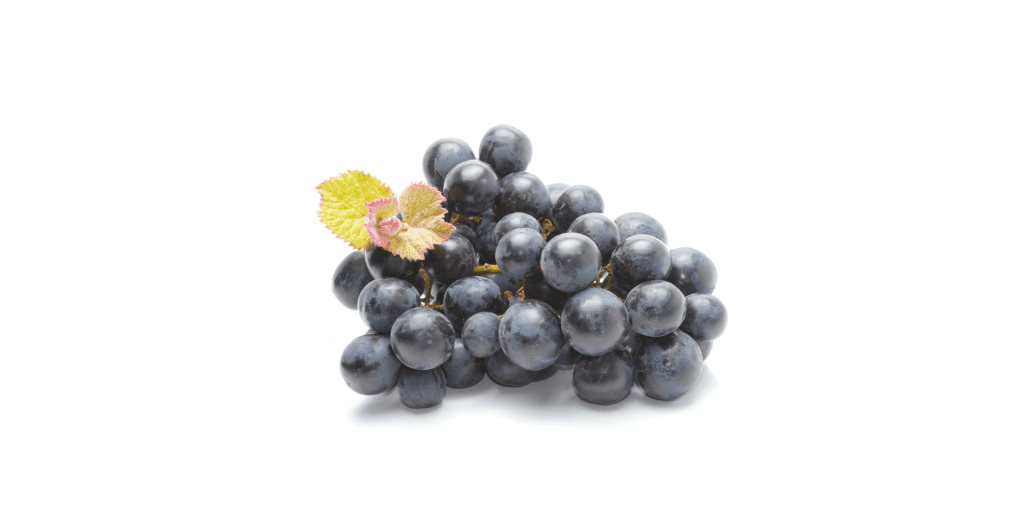Resveratrol

A Promising Antiaging Agent for Cosmetic Skin Treatments
Nowadays, resveratrol, a polyphenolic phytoalexin is increasingly included in the formulas of cosmetic products and dermatology as an active ingredient, as a consequence of the well-known health-beneficial properties, namely antioxidant, anti-inflammatory, anti-viral, and anti-bacterial effects.
A Promising Antiaging Agent for Cosmetic Skin Treatments
Research Conducted By Javier Fidalgo, Ana Novo Barros And Ana Casas
Nowadays, resveratrol, a polyphenolic phytoalexin is increasingly included in the formulas of cosmetic products and dermatology as an active ingredient, as a consequence of the well-known health-beneficial properties, namely antioxidant, anti-inflammatory, anti-viral, and anti-bacterial effects. This important compound can be biosynthesized naturally by plants or by industrial synthetic processes.
Resveratrol (3,4′,5-trihydroxy-trans-stilbene) is a naturally occurring compound, that belongs to the stilbenoid group of polyphenols, which is synthesized by plants (e.g., red grapes and berries).
Apart from its anti-inflammatory and antioxidant effects, a broad spectrum of effects has been attributed to the use of this compound such as
- Anti-aging.
- Skin-whitening.
- Antiangiogenic.
- Collagen I and III stimulation (in fibroblasts) and estrogen-like effects
- The ability to protect cells against hydrogen peroxide-induced oxidative stress and UV-irradiation-mediated cell death.
- Cosmetology and dermatology have been popular because of their ability to penetrate the skin barrier and their anti-aging activity.
- In fact, resveratrol has an important impact on the regulation of inflammation and, as a consequence, repair-related processes in the skin.
- Furthermore, when administered either topically or orally has been proven to be safe and also to overcome the skin barrier.
Pharmacology, Toxicity, and Skin Permeation.
Orally, and considering its structure, resveratrol is rapidly absorbed from the gastrointestinal tract, but with a low bioavailability because is rapidly metabolized in the liver.
Another important characteristic of this compound is that, as already proved, it is non-irritating to the skin and eyes and non-sensitizing. In vitro and in vivo resveratrol were demonstrated to be non-toxic, safe for oral and dermal application, as well as being well tolerated. Resveratrol also showed high permeability in the skin, overcoming the skin barrier in its neutral (non-ionized) form, showing that it is readily available in the stratum corneum (SC) in human studies This is of high importance, once the most exposure to reactive oxygen species (ROS) takes place in the SC, supporting the use of resveratrol in cosmeceuticals
Possible skin application in melasma and its use in photoaging.
Antioxidant Activity
Skincare formulations are usually based on exogenous antioxidants that cannot be synthesized by our body, like vitamins or phenolic compounds. Some studies referred to in Literature, report that resveratrol is able to inhibit UV-induced lipid peroxidation. UV irradiation (UV A and B) and blue light are known to induce the formation of free radicals. They can also negatively influence some immunological processes and aging, as well as pathophysiological mechanisms leading to skin inflammatory disorder use of resveratrol in cosmeceuticals.
Melasma was associated with increased ROS levels which will lead to the oxidation of proteins and lipids and cause oxidative damage to the cells. Skin photoaging is also associated with ROS due to the exposure of the skin to sunlight. Recent studies also suggested melasma as a photoaging skin disorder. Resveratrol is active in neutralizing and inhibiting, the formation of ROS. Resveratrol was also proven to have radical scavenging properties. A different study was observed to be a better antioxidant than many flavonoids.

Skin-whitening activity and photoaging
One of the common clinical characteristics of melasma is the appearance of skin hyperpigmentation mainly in the face. In photoaging hyperpigmentation also occurs through cumulative sun exposure. Resveratrol has the ability to modulate the tyrosinase activity by the inhibition of this enzyme and by acting as a competitive substrate and thus blocking melanogenesis.
Both, in melasma and skin aging, there is a decrease in the quantity of collagen I, III, IV-VII, a decrease in collagen I, IV in melasma, and all of them in skin aging.
The wound healing potential of resveratrol
Another interesting potential property of this substance is its application to the wound-healing process. Wound healing is a natural biological mechanism for repairing tissues after suffering from an injury. After tissue damage, certain compounds play a crucial role in both inflammation and oxidation processes and are necessary for the wound healing process to fight against pathogens invading the organism, but not good when are produced at high levels in the tissue. So, control of the ROS produced by compounds such as Resveratrol knowing its proven anti-oxidant capacity is of interest to reduce the excess tissue damage. Evidence that demonstrates the potential of resveratrol in treating wound healing has been published.

Clinical Evidence of resveratrol uses in cosmetics
The use of resveratrol in cosmetic formulas has increased in the last 15 years because of its potential biological activities described above. The use of this substance in cosmetic formulas such as a cream containing this active ingredient was studied in the work from Igielska-Kalwat . In this study, 20 volunteers were administrated topically on the face with a cream composed of 0.007% resveratrol and with a placebo (no resveratrol cream). Results after 6 weeks showed that treated patients increased skin hydration and firmness, concluding that resveratrol has moisturizing and tightening effects on the skin but also safety without any sign of skin irritation.
In 2014, Farris P. demonstrated also the efficacy of another resveratrol-enhanced formulation (1% resveratrol, 0.1% Vitamin E and 0.5% baicalin) in the treatment of photodamaged skin. After a 12-week period, an improvement in fine lines and wrinkles derived from photo-aging processes was observed.
In a similar work from 2013, the efficacy of protecting the skin after UV aggression on 15 healthy volunteers was performed. In this study after repetitive UV radiation 1% resveratrol treatment after UV damage showed a better protective effect even than other antioxidants alone, and logically better than placebo-treated subjects.
In a different study from Moyano J.R,a W/O (water in oil) cream was prepared to optimize the permeability and stability of the trans isomer of the resveratrol and study the elasticity, hydration, and luminosity capacity of the formulas in 8 women ranging from 45 to 70 years old during a 30 days trial. Results suggested the efficacy of the resveratrol emulsion produced in all patients tested. The increase in all parameters studied was 20.53%, 49.70%, and 6.17% for hydration, elasticity, and colorimetry respectively.
Common Terms Explained
- Polyphenolic Phytoalexin.
- A polyphenolic small molecule, present in many plant-derived foods, including grapes, red wine, peanuts, various berries, and cocoa having antimicrobial chemical properties to combat infection by a pathogen (such as a fungus)
- Antiangiogenic
- A drug or substance that keeps new blood vessels from forming. In cancer treatment, antiangiogenesis agents may prevent the growth of new blood vessels where tumors need to grow.
- Polyphenol
- Polyphenols are micronutrients that naturally occur in plants. They’re included in many supplements, though they’re also easy to get in your diet from foods like fruits, vegetables, teas, and spices. There are more than 8,000 types of polyphenols.
- In addition to their antioxidant activity, polyphenols have many other health benefits. Some studies strongly suggest that diets rich in polyphenols may offer protection against the development of certain cancers, cardiovascular diseases, diabetes, and neurodegenerative diseases.
- Lipid peroxidation
- Lipid peroxidation is the chain of reactions of oxidative degradation of lipids. It is the process in which free radicals “steal” electrons from the lipids in cell membranes, resulting in cell damage.
- ROS: Reactive Oxygen Species
- A type of unstable molecule that contains oxygen and that easily reacts with other molecules in a cell. A build-up of ROS in cells may cause damage to DNA and RNA and may cause cell death. ROS are free radicals

Written By Trish Green DiHom(Pract) B.Ed Cidesco Diplomat. Bach Flower Therapist.
Trish is a graduate of the Victoria University of Manchester, Trish is a teacher with 35 years of experience in the education field. For twenty of those years she has been an educator in the esthetics industry. She is an advocate for raising standards in education for Complementary Health Care Practitioners with special interest in Aromatherapy. Her career in the field of natural health and esthetics is wide and varied. From Doctor of Homeopathy to Cidesco diplomat, Trish is a dedicated professional, committed to ongoing education and the education of others.
